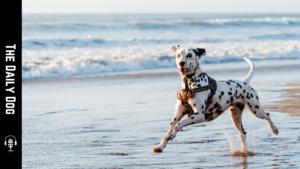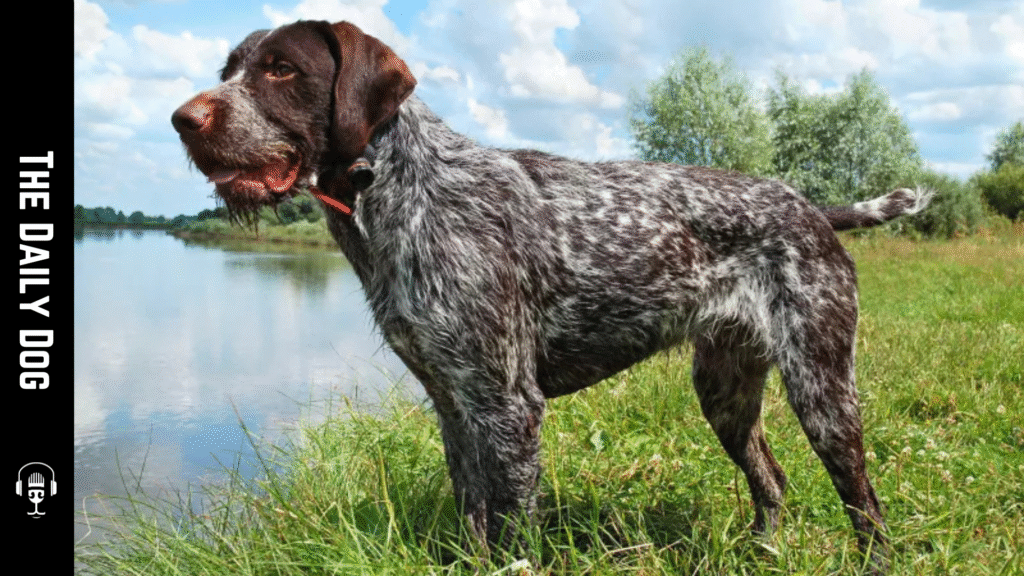The German Wirehaired Pointer (GWP) is a distinguished breed known for its versatility, intelligence, and loyalty. With its distinctive wiry coat and energetic personality, this breed has become a favorite among hunters, outdoor enthusiasts, and families. Whether you’re an experienced dog owner or considering adding a canine companion to your household, understanding the traits, care needs, and history of the German Wirehaired Pointer can help you determine if this remarkable breed fits your lifestyle.
Origins and History of the German Wirehaired Pointer
The German Wirehaired Pointer traces its roots back to the late 19th century in Germany. It was developed by crossing various breeds, including the German Shorthaired Pointer, the Irish Water Spaniel, the German Pointer, and the Poodle. The goal was to create a versatile hunting dog capable of tracking, retrieving, and working in diverse terrains and weather conditions.
The German Kennel Club (VDH) officially recognized the breed as the German Wirehaired Pointer in the early 20th century. Over time, it gained popularity among hunters for its stamina, keen sense of smell, and adaptability. Today, the GWP remains a favored hunting partner and a beloved family pet, thanks to its friendly nature and high intelligence.
Physical Characteristics and Appearance
The German Wirehaired Pointer is a medium—to large-sized breed. Its muscular and athletic build is suited for rigorous outdoor activities. The most distinctive feature is its dense, wiry coat, which provides protection against harsh weather, thorny bushes, and water.
- Size: Males typically stand between 23 and 26 inches at the shoulder, while females are slightly smaller, measuring around 22 and 24 inches.
- Weight: Adult males generally weigh between 55 to 70 pounds, with females weighing slightly less.
- Coat: The wiry coat is dense, weather-resistant, and coarse to the touch. It requires regular grooming to prevent matting.
- Color: The breed’s coat is usually a combination of liver (reddish-brown) and white, with some having ticked or roan patterns. The face often features expressive eyes that convey intelligence and alertness.
Temperament and Personality Traits
German Wirehaired Pointers are celebrated for their lively, affectionate, and intelligent nature. They thrive on interaction and are known for their friendly disposition toward family members and other animals.
Key personality traits include:
- Loyalty: GWP dogs form strong bonds with their owners and often act as protective, devoted companions.
- Intelligence: Highly trainable and quick learners, they excel in obedience, agility, and various canine sports.
- Energetic: Their high energy levels are ideal for active families or individuals who enjoy outdoor activities.
- Versatility: Beyond hunting, they are well-suited as service dogs, therapy dogs, and family pets.
Social Behavior and Interaction
German Wirehaired Pointers are generally good with children, especially when socialized from a young age. They tend to be friendly and playful but can be wary of strangers initially, which makes them good watchdogs. Proper socialization helps them develop confidence and reduces any tendencies toward over-protectiveness.
Exercise and Activity Needs
Due to their energetic nature, GWP requires ample daily physical activity. They are unsuitable for sedentary lifestyles and thrive in environments where they can run, explore, and perform tasks.
Exercise recommendations:
- Daily walks: At least 1 to 2 hours of brisk walking or jogging.
- Mental stimulation: Puzzle toys, obedience training, and scent work engage their minds.
- Outdoor play: Off-leash activities in secure areas, such as fetch or agility courses, help burn excess energy.
Lack of sufficient exercise can lead to behavioral issues like chewing, digging, or excessive barking. Their need for activity makes them excellent companions for active individuals or families with access to outdoor spaces.
Training and Socialization
German Wirehaired Pointers are intelligent but can also be independent and stubborn. Consistent, positive reinforcement training methods yield the best results.
Training tips:
- Start early: Socialize and train from a young age to establish boundaries and good manners.
- Use positive reinforcement: Reward-based methods motivate learning and strengthen the bond.
- Be patient: GWP dogs respond well to gentle, firm guidance, but can become bored with repetitive commands.
- Incorporate mental challenges: Scent games, obedience exercises, and problem-solving tasks keep them engaged.
Early socialization with other dogs and people helps foster well-rounded behavior. Because dogs’ hunting instincts can sometimes lead to chasing small animals, secure fencing and supervision are essential.
Grooming and Maintenance
The GWP’s wiry coat is relatively low-shedding but requires regular grooming to maintain its appearance and health.
Grooming tips:
- Brushing: Weekly brushing with a slicker brush helps remove loose hair and prevent matting.
- Hand-stripping: Periodic hand-stripping is recommended to maintain the coat’s texture and remove dead hair.
- Bathing: Bathe as needed, typically every few months or when dirty.
- Ear care: Regularly check and clean ears to prevent infections.
- Nail trimming: Keep nails short to avoid discomfort or injury.
Routine grooming also provides an opportunity to check for skin issues or parasites.
Health Considerations and Lifespan
German Wirehaired Pointers are generally healthy, active dogs, but like all breeds, they can be prone to specific health issues.
Common health concerns:
- Hip Dysplasia: A genetic condition affecting hip joints; ensure reputable breeding practices.
- Elbow Dysplasia: Similar to hip dysplasia but affecting the elbows.
- Progressive Retinal Atrophy (PRA): An eye disorder leading to blindness.
- Hypothyroidism: A condition where the thyroid gland doesn’t produce enough hormones.
- Allergies: Skin or food allergies may occur.
With proper care, diet, and regular veterinary check-ups, the average lifespan of a GWP is around 12 to 14 years.
Nutrition and Diet
A balanced diet tailored to their age, size, and activity level is vital for maintaining health and energy.
Feeding guidelines:
- High-quality dog food: Choose brands that list meat as the primary ingredient.
- Portion control: Avoid overfeeding to prevent obesity, which can lead to health problems.
- Fresh water: Always ensure access to clean water.
- Treats: Use sparingly and opt for healthy options to support training.
Consult your veterinarian for personalized dietary recommendations, especially if your dog has special health considerations.
Living Environment and Suitability
German Wirehaired Pointers are best suited for active households with ample space to run and explore. They adapt well to rural, suburban, or large-yard environments but can also thrive in urban settings if given sufficient exercise.
Ideal conditions:
- Active family: Those who enjoy outdoor activities like hiking, running, or hunting.
- Secure fencing: To prevent chasing or escaping during outdoor play.
- Mental stimulation: Regular training and interactive toys to keep their minds occupied.
They may not be the best choice for apartment living unless their exercise and mental needs are met consistently.
Final Thoughts
The German Wirehaired Pointer embodies a blend of intelligence, agility, and loyalty that makes it an exceptional companion for those who lead active lifestyles. With proper training, socialization, and care, the GWP can become a loving, obedient, and versatile member of the family.
If you’re considering adding a German Wirehaired Pointer to your household, ensure you’re prepared for the commitment of regular exercise, grooming, and training. Their energetic spirit and affectionate nature can bring endless joy and adventure to your life.
We offer a FREE Strategy Call.
Click on the graphic to learn more
Read More

Discovering the Bloodhound: The Ultimate Scent Detection Canine








